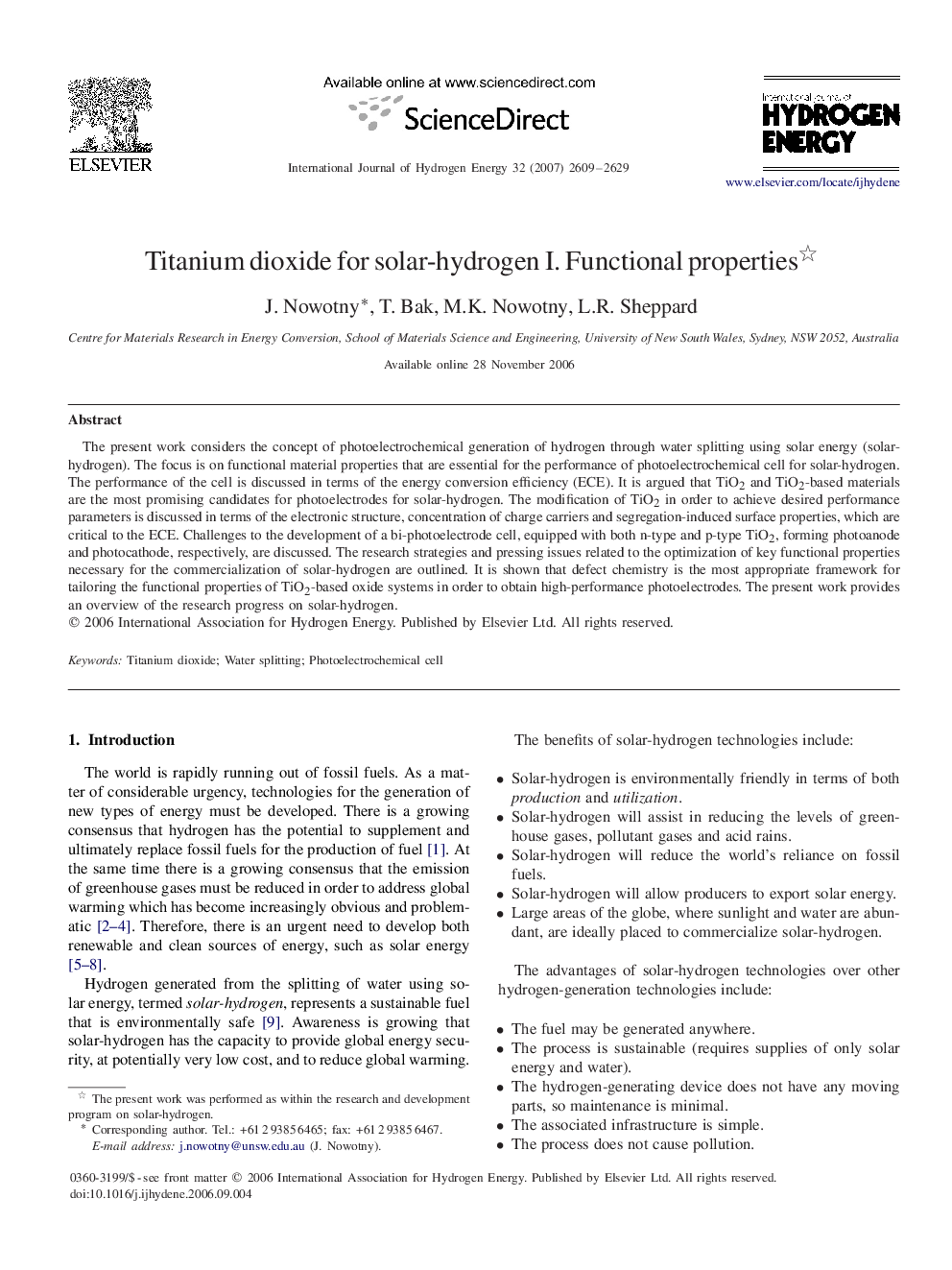| کد مقاله | کد نشریه | سال انتشار | مقاله انگلیسی | نسخه تمام متن |
|---|---|---|---|---|
| 1280159 | 1497670 | 2007 | 21 صفحه PDF | دانلود رایگان |

The present work considers the concept of photoelectrochemical generation of hydrogen through water splitting using solar energy (solar-hydrogen). The focus is on functional material properties that are essential for the performance of photoelectrochemical cell for solar-hydrogen. The performance of the cell is discussed in terms of the energy conversion efficiency (ECE). It is argued that TiO2 and TiO2-based materials are the most promising candidates for photoelectrodes for solar-hydrogen. The modification of TiO2 in order to achieve desired performance parameters is discussed in terms of the electronic structure, concentration of charge carriers and segregation-induced surface properties, which are critical to the ECE. Challenges to the development of a bi-photoelectrode cell, equipped with both n-type and p-type TiO2, forming photoanode and photocathode, respectively, are discussed. The research strategies and pressing issues related to the optimization of key functional properties necessary for the commercialization of solar-hydrogen are outlined. It is shown that defect chemistry is the most appropriate framework for tailoring the functional properties of TiO2-based oxide systems in order to obtain high-performance photoelectrodes. The present work provides an overview of the research progress on solar-hydrogen.
Journal: International Journal of Hydrogen Energy - Volume 32, Issue 14, September 2007, Pages 2609–2629